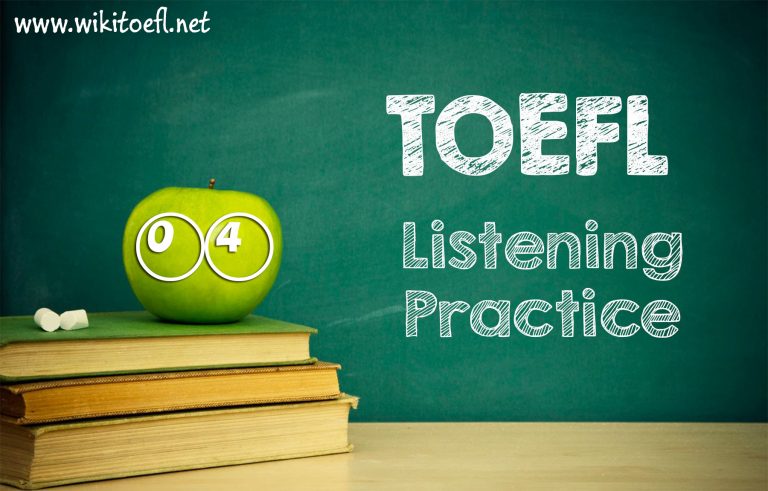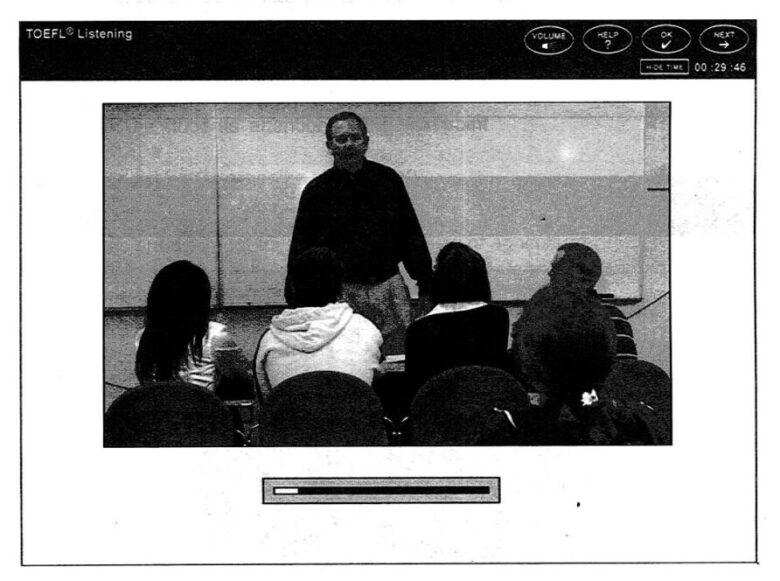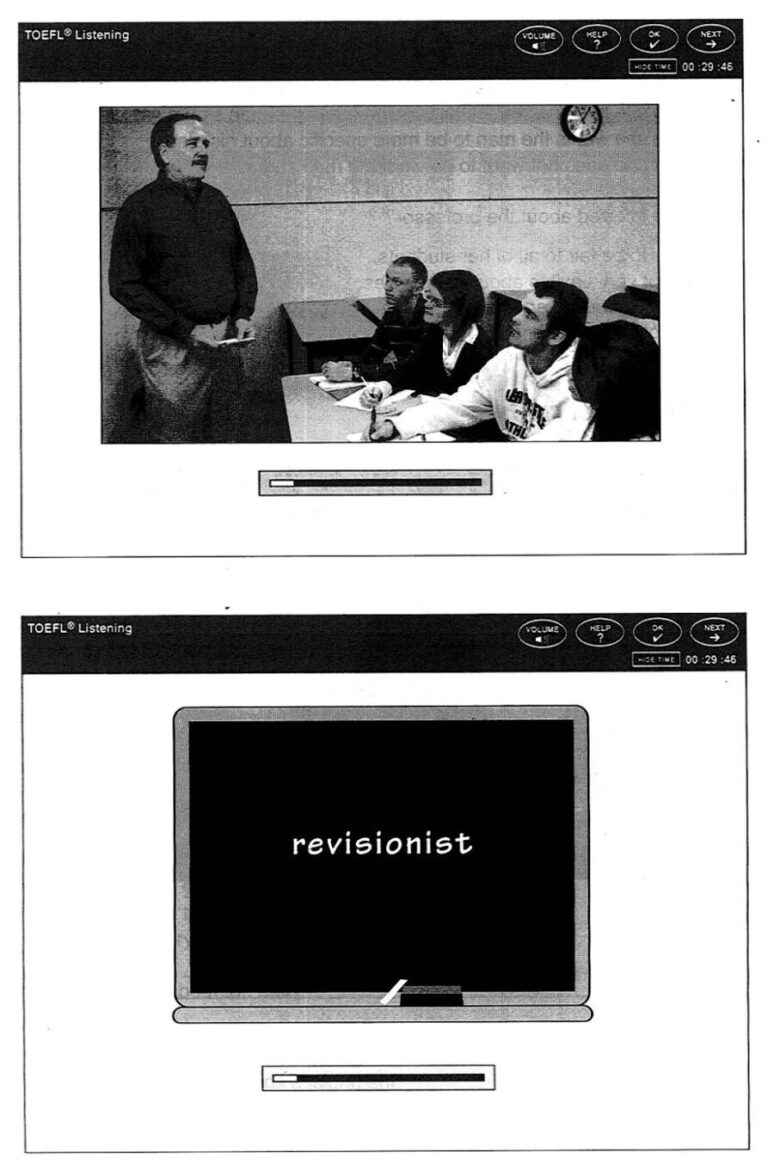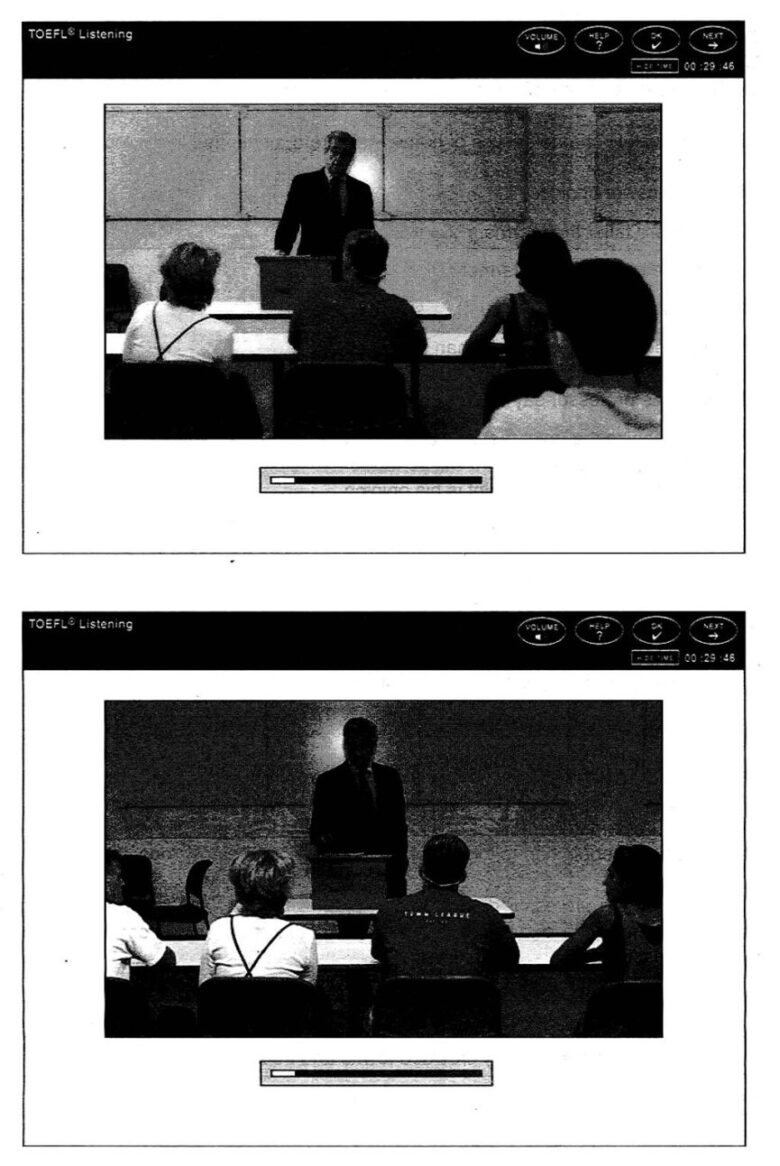TOEFL IBT Listening Practice Test 04 from Barron’s TOEFL iBT
The Listening section tests your ability to understand spoken English that is typical of interactions and academic speech on college campuses. During the test, you will listen to conversations and lectures and answer questions about them.
This is the short format for the Listening section. On the short format, you will listen to two conversations and four lectures. After each listening passage, you will answer 5-6 questions about it.
You will hear each conversation or lecture one time. You may take notes while you listen, but notes are not graded. You may use your notes to answer the questions.
Choose the best answer for multiple-choice questions. Follow the directions on the page or on the screen for computer-assisted questions. Click on Next and then on OK to go on to the next question. You cannot return to previous questions.
The Listening section is divided into sets. Each set includes one conversation and two lectures. You have 10 minutes to answer all of the questions for each set. You will have 20 minutes to answer all of the questions on the short format. A clock on the screen will show you how much time you have to complete your answers for the section. The clock does NOT count the time you are listening to the conversations and lectures.
Listening 1 “Professor’s Office ”
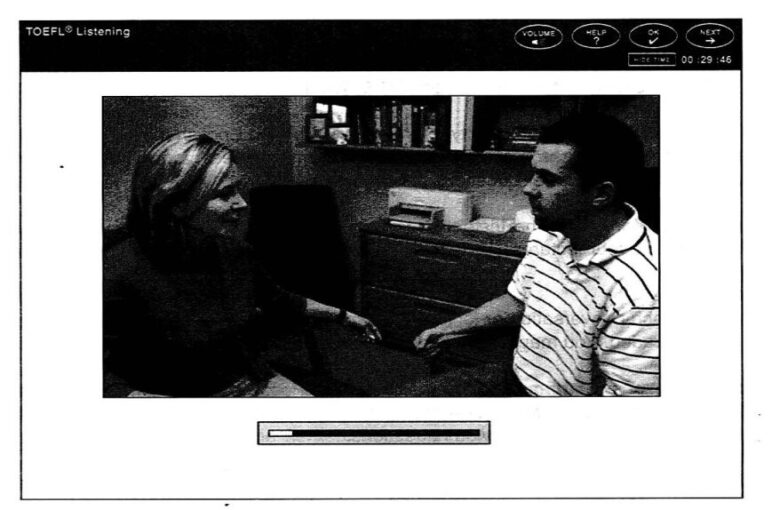
1. Why does the man go to see his professor?
A. To take a makeup test for a class that he missed
B. To explain why he has been absent from class
C. To turn in an extra credit project to the professor
D. To ask the professor how to bring up his grade
2. Why did Ernie get a low grade on the last test?
A. He does not understand the material.
B. He is not a very good student.
C. He did not have time to finish it.
D. He was in a hurry to leave the class.
3. What do we know about the test?
A. There were 100 questions on it.
B. It was worth 25 percent of the final grade.
C. The test was an extra credit assignment.
D. The questions were very difficult.
4. What does the professor say this:
CD Because she doesn’t understand what the man wants her to do
CD Because she has finished the discussion about the man’s problem
CD Because she wants the man to be more specific about his plan
CD Because she does not want to do what the man suggests
5. What can be inferred about the professor?
CD She tries to be fair to all of her students.
CD She is not very flexible about her policies.
CD She does not have very many students.
CD She is not sure what she wants to do.
_____________________________________________
Listening 2 “Anthropology Class’
6. Which of the following is the main topic of the lecture?
CD A progressive view of agriculture
CD The conditions for the development of agriculture
CD A comparison of hunter-gatherers and farmers
CD The negative effects of agriculture on early farmers
7. What are two key characteristics of hunter-gatherers mentioned in the lecture?
Click on 2 answer choices.
A. They were taller than farmers.
B. They ate less well than farmers.
C. They lived longer than farmers.
D. They were less physically fit than farmers.
8. Why does the professor say this:
CD To emphasize the point that he has just made
CD To indicate that another point will be made
CD To demonstrate that the point is his opinion
CD To regain the students’ attention for the next point
9. How does the professor organize his lecture?
CD He contrasts older theories of agriculture with newer ones.
CD He makes an argument for the revisionist view of agriculture.
CD He defines revisionism by giving examples of earty farmers.
CD He provides a chronological account of early farmers.
10. Which of the following statements best summarizes the position of the revisionists?
CD The agricultural revolution affected all human activity.
CD The development of agriculture had a positive influence on nutrition.
CD Agriculture contributed to the health risks for early farmers.
CD Agricultural people had to move from place to place to plant crops.
11. In the lecture, the professor describes the relationship between health and agriculture. Indicate whether each of the following is true or false. Click in the correct box for each phrase.
Yes No
A. Epidemics were spread by crowded towns and trade.
B. Crop failures threatened the entire population.
C. Wars with invading hunter-gatherers devastated them.
D. Unbalanced diets contributed to malnutrition.
E. Hard labor damaged their bones.
__________________________________________
Listening 3 “Business Class”
12. What the lecture mainly about?
CD Commercials on television
CD Marketing brand-name products
CD A book by Rob Frankel
CD Selling Aunt Ruby’s chicken
13. Why does the professor say this:
CD To emphasize the importance of commercials
CD To correct something that he said earlier
CD To identify the time limits for most commercials
CD To relate new information to a previous example
14. According to the professor, why do consumers develop brand loyalty?
CD They have a relationship with the personality that the product projects.
CD They are able to recognize the brand easily when they see it.
CD They tend to make decisions based on recommendations by friends.
CD They find a product that they like and continue to buy it.
15. How does the professor emphasize his point about branding?
CD He uses Aunt Ruby’s chicken as an example.
CD He defines it by contrasting it with related concepts.
CD He refers to a book that he has written.
CD He shows a familiar commercial in class.
16. Why does the professor mention laundry detergent?
CD To give an example of price wars
CD To show that consumers buy different brands
CD To name an industry that introduces new brands
CD To explain the concept of brand loyalty
17. According to the professor, what would be a good way to sell a product?
CD Design a good logo to present the product to the public
CD Hire a celebrity that customers like and relate to .
CD Make it easy for consumers to recognize the packaging
CD Increase the customer service for the product

